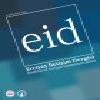Diyalektik Göstergebilimsel Yaklaşım Çerçevesinde Inferno ve Avengers: Infinity War Filmleri
Göstergebilim, Diyalektik, Sinema, Hollywood, Kötülük
Inferno and Avengers: Infinity War Films in the Framework of Dialectical Semiotic Approach
___
- Alonso, I. (2018). Inferno Unleashed: Dan Brown’s Uncomfortable Solution to Overpopulation. European Journal of Literature, Culture and Environment , 82–93.
- Bergthaller, H., & González, M. C. (2018). Population , Ecology , and the Malthusian Imagination : An Introduction. Ecozono, 9(1), 1–10. https://ecozona.eu/article/view/2484
- Brown, D. (2013). Cehennem (Inferno) (İ. Demir & P. Demir (trans.); 1st ed.). Altın Kitaplar.
- Cante, R. C. (1999). HIV, Multiculturalism, and Popular Narrativity in the United States: Afterthoughts on “Philadelphia” (and Beyond). Narrative, 7(3), 239–258. https://www.jstor.org/stable/pdf/20107187.pdf?casa_token=si_H4q3MBLoAAAAA:5olqdq0RR89jN4i6iUAITQ06R3Iih7e3v757n5YQy0MoJ-UQ90HIzZgph6MmRtaaayC-97R-NOkpyIlw6vcFiiEIl4HX3gZRzrHtTQXIwroMPr_MKPlJ
- Cevizci, A. (2021). Felsefe Tarihi (S. Köseoğlu (ed.); 11th ed.). Say Yayınları.
- Diker, C. (2020). Bir Anti-kahraman Anlatısı Olarak Joker Filminin Postmedrnite Perspektifinden İnclenemsi. Sinecine, 11(2), 268–299. https://dergipark.org.tr/tr/download/article-file/1085627
- Dixon, D. (2022). Artistic ( Counter ) Speech. The Journal of Aesthetics and Art Criticism, XX(August), 1–11. https://www.euppublishing.com/doi/full/10.3366/film.2022.0195
- Güneş, A. (2012). Çağdaş Bir Çözümleme Yöntemi: Göstergebilim. NWSA-HUMANITIES, 33(10), 348–352. http://dx.doi.org/10.1016/j.actamat.2015.12.003%0Ahttps://inis.iaea.org/collection/NCLCollectionStore/_Public/30/027/30027298.pdf?r=1&r=1%0Ahttp://dx.doi.org/10.1016/j.jmrt.2015.04.004
- Kellner, D. (1991). Film, Politics, and Ideology: Reflections on Hollywood Film in the Age of Reagan. Velvet Light Trap, 5(1), 145–148. https://doi.org/10.26613/ESIC.5.1.231. 15 Aralık 2022 tarihinde pages.gseis.ucla.edu/faculty/kellner/essays/filmpoliticsideology.pdf adresinden edinilmiştir.
- Kragsbjerg, T. M. (2021). The Malthusian Alternative and Overpopulation in Avengers: Infinity War and Avengers: Endgame. Leviathan: Interdisciplinary Journal in English, 7. https://doi.org/10.7146/lev.v0i7.125338
- Laskar, S. (2018). The Overpopulation Apocalypse and Anthropocentric Bioterrorism in Dan Brown ’ s Inferno. An Interdisciplinary Journal of Literary Studies, III(ii), 1–10. https://zenodo.org/record/1318969#.YhC1suhBy5c
- Mastebroek, C. (2020). Masking the Destructive Force of a Dying Climate (Issue August) [Redbound University]. https://theses.ubn.ru.nl/handle/123456789/11012?locale-attribute=en
- Özarslan, Z. (2019). Sinema Kuramları - 1 (Z. Özarslan (ed.); 3rd ed.). Su Yayınları.
- Popper, K. R. (1940). What is Dialectic? Mind Association, 49, 403–426.
- Rachmawati, D. L., Dharmawanti Kurnia, F., & Mustofa, A. (2020). The Moral Philosophical Analysis As Reflected on Dan Brown’s Inferno. Jurnal Pendidikan Bahasa Inggris, 26(1), 26–39. https://doi.org/10.26618/exposure.v9i1.2892
- Rifat, M. (2018). Homo Semioticus ve Genel Göstergebilim Sorunları (K. Erdur (ed.); 3rd ed.). Yapı Kredi Yayınları.
- Shaul, D. (2022). Hegel and Hitchcock’s Vertigo : On Reconciliation. Film-Philosophy, 26(2), 196–218. https://doi.org/10.3366/film.2022.0195
- Spinoza, B. de. (2014). Ethica (E. Çoraklı (ed.); Ç. Dürüşken (trans.); 7th ed.). Alfa Yayınları.
- Statista. (2022). Filmed entertainment revenue in selected countries worldwide in 2019. Statista. https://www.statista.com/statistics/296431/filmed-entertainment-revenue-worldwide-by-country/
- Tuncer, E. S. (2020). Göstergebilimin Çözümleme Modelleri Işığında Reklam Anlatıları. Atatürk Üniversitesi İletişim Dergisi, 20, 73–102. chrome-extension://efaidnbmnnnibpcajpcglclefindmkaj/https://dergipark.org.tr/en/download/article-file/1091022
- Uluç, G., & Küngerü, A. (2018). Sinemada Arapların temsiline bir örnek: “Keskin Nişancı” filmi. Akademik Bakış Uluslararası Hakemli Sosyal Bilimler Dergisi, 68, 1–13.
- Ural, Ş. (2017). Temel Mantık (4th ed.). Çantay Yayınları.
- Vang, J. (2019). Avenging the Anthropocene [Linneuiversitetet]. https://www.diva-portal.org/smash/record.jsf?pid=diva2%3A1332916&dswid=-9353
- Yiğitbaşı, K. G. (2018). Analyzing the Children’s Book The Journey Using Greimas’ Semiotic Analysis. Middle East Journal of Refugee Studies, 3(1), 53–79. https://doi.org/10.12738/mejrs.2018.3.1.0005
- Zygulski, P. (2022). Catholic Eschatological Imagination and the Mystics of Fire: Possible Perspectives for a Muslim-Christian Dialogue. Religions, 13(3), 1–23. https://doi.org/10.3390/rel13030219
- ISSN: 1308-3198
- Yayın Aralığı: Yılda 2 Sayı
- Başlangıç: 2009
- Yayıncı: Erciyes Üniversitesi İletişim Fakültesi
Popülizm ve Sosyal Medyayla İlgili Çalışmaların Bibliyometrik Analizi
Kolektif Bilinçdışı Unsurların Reklamlarda Sosyal İçerikli Korku Kullanımı Üzerindeki Rolü
1954 Seçimlerinde Siyasi Partilerin Söylemlerinin Gazeteler Üzerinden İncelenmesi
Diyalektik Göstergebilimsel Yaklaşım Çerçevesinde Inferno ve Avengers: Infinity War Filmleri
Muhammed Oğuzhan ŞAHİN, Çiğdem ÇALAPKULU
Türk Modernleşmesinde Jön Türkler ve Hüseyin Cahit Yalçın’ın Gazeteci ve Siyasi Kimliği
Ötekileştirmenin Bir Aracı Olarak Medya: Mültecilere Yönelik Avrupa ve Amerika Basınından Örnekler
Bir Katılım Bankasının Örgütsel İletişim Kültüründe Takdirin Yeri
Geçmişten Günümüze TRT Dizi Filmlerinin Yayın Hayatına Yansıması ve 2020-2022 Arası Örnekler
Sosyal Medyada Nefret Söylemlerinin Etkileri: Türkiye’deki Suriyeli Mülteciler Örneği
